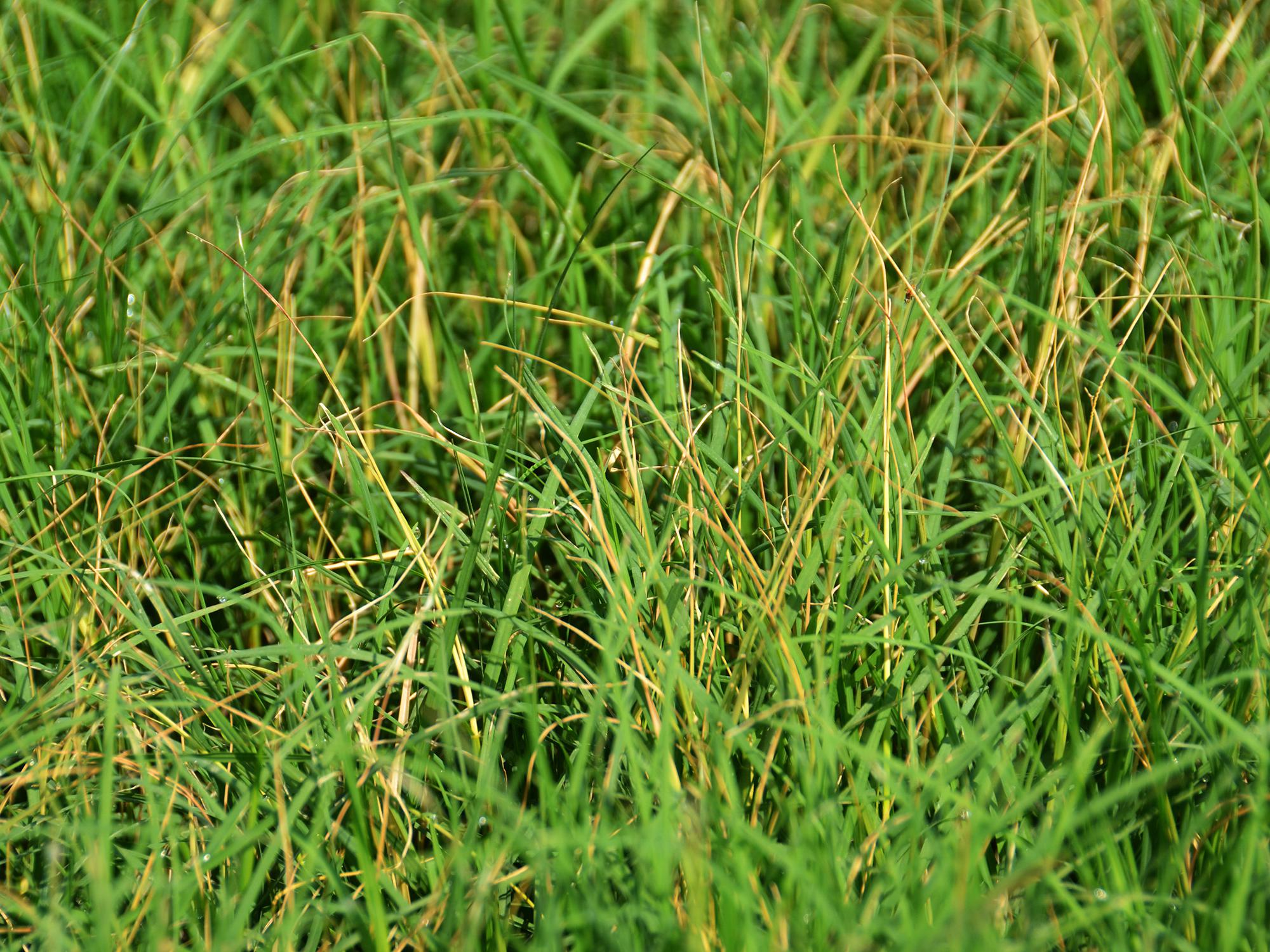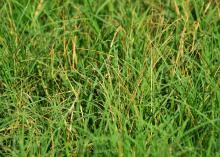Information Possibly Outdated
The information presented on this page was originally released on July 25, 2014. It may not be outdated, but please search our site for more current information. If you plan to quote or reference this information in a publication, please check with the Extension specialist or author before proceeding.
Turf and hay battle armyworms, weather
JACKSON -- Turf and forage producers in Mississippi need fewer clouds and more sunshine.
In 2014, forage producers raised an estimated 600,000 acres of hay across the state. There are about 60 farms producing sod for sale in the state.
Turf production…
The unusually harsh winter melted into a cool, wet spring and summer, which slowed spring growth and intensified diseases and last fall’s herbicide injury in sod, said Jay McCurdy, turf grass specialist with the Mississippi State University Extension Service.
“The northern part of the state fared the worst this season, with temperatures dipping below 10 degrees in many areas, said McCurdy, who is also an assistant professor in the MSU Department of Plant and Soil Sciences. “Even coastal areas experienced temperatures in the teens. In shaded areas and on north-facing slopes, we lost a lot of grass.”
Disease pressure increased and fungi, such as pink snow mold, were prominent this spring. Pink snow mold is caused by Microdochium nivale, which thrives in cool temperatures and damp conditions.
Delayed crabgrass germination reduced pre-emergence herbicide effectiveness, McCurdy said.
The state’s sod farmers struggled to keep up with demand this season, which hit some athletic and recreational facilities managers hard.
“Some athletic fields were devastated by winter injury, and many sports turf managers had to wait until healthy sod was available to patch and replace heavily trafficked fields,” McCurdy said.
The high incidence of winter injury and slow recovery resulted in a high demand for sod and a low supply. McCurdy said this scenario may mean rising prices for sod.
Turf acreage and prices are currently not reported like other commodities in the state, McCurdy said. But McCurdy said he is working to re-establish a record-keeping program.
Forage…
Forage producers and cattlemen face heavier insect and weed pressures caused by the unseasonable weather conditions.
Extension entomologist Blake Layton said Bermuda grass stem maggots and fall armyworms are the season’s most troublesome pests.
Stem maggots arrived in Mississippi two years ago and are a threat primarily to highly managed Bermuda grass hayfields.
The maggots feed on the tips of developing stems, reducing growth rates. Heavy infestations can cause fields practically to stop growing.
Turf and pastures are less affected because frequent mowing or grazing provides mechanical control.
Early stem maggot sprays provide little residual control of armyworms, which usually appear later in the hay growth cycle and have posed the biggest threat this season.
“We have more armyworms than are normal for this time of year, but that isn’t unusual,” Layton said. “Every few years they show up early.”
Because of their unpredictable migration pattern, fall armyworms can appear as early as June. Controlling them requires six or more pesticide applications. These pests cause more damage to Mississippi hay fields and pastures than any other forage pest because of their ability to consume large amounts of foliage in only two or three days, Layton said.
Dennis Reginelli, Extension Northeast region agronomic crops specialist, said a few North Mississippi fields already have been devastated by early armyworm infestations.
“I was in a field yesterday that armyworms stripped,” Reginelli said on July 22. “I visited a Noxubee County field about 10 days ago that had a large number of armyworms. They are definitely here, but they’re not in every field.”
Reginelli said the best defense against the worm is to scout fields and pastures one to two times per week.
“I am encouraging all of our producers to look for signs that they may have armyworms beginning to feed on their crops,” he said. “If they notice a change in grass texture, which gives the blades a frosty appearance, they need to walk the field. A large number of birds in the field is also an indicator of armyworm presence, but this is usually a late sign.”
The spray threshold for armyworms is three to five larva per square foot. With this year’s heavy population, producers may need to make two or three pesticide applications per cutting.
Cool temperatures reduced rapid forage growth and frequent rains made it difficult to make timely herbicide applications.
“We’ve got some issues with harvest because of all the rain we’ve gotten,” he said. “Delayed harvest will hurt quality in some situations, but overall, I think the state will have a good harvest.”
Hay acreage is down 120,000 acres from 2013. The estimated value of hay stands at $119 million. Current prices for hay range from $50 to $80 per ton, said John Michael Riley, Extension agricultural economist with Mississippi State University.
For more information on management and control of fall armyworms, visit http://www.msucares.com and download Extension publication 2717, Fall Armyworms in Hayfields and Pastures. For more information on Bermuda grass Stem Maggot, read Layton’s July 10, 2013, Bug Wise Newsletter.








